Pont-Saint-Martin 21.51km (17.84km walking)


Arranging for our bags to be taken by taxi again on this final stage of the Aosta valley, we walked a short distance through the old town to view the Roman bridge of Pont-Saint-Martin. Built in the 1stC BC, the bridge carried the Via delle Gallie across the River Lys. While most of the surrounding buildings were destroyed by the Allied bombing of Pont Saint-Martin on August 23, 1944, this bridge remained standing.
It was quite a challenging walk today, the route returning to the lower hillsides, the path often narrow, steep (both up and down) and rocky. Taking a break at the Capella di San Rocco, we got a wonderful view south along the valley. The flags of both Piedmont and Italy marked our crossing over from the province of Aosta.
The area around Carema, a small village on the border between Piedmont and Valle d’Aosta, is covered with terraced vineyards of Nebbiolo grapes, used to make Carema DOC wine. Described as a natural amphitheatre protected from the cold north winds and with plenty of sunshine, but on a steep slope, the mountain has been terraced with dry stone walls with pergolas.
Each chestnut wood pergola, called a topia, is supported on one side by a dry-stone wall and on the other by a system of stone columns called pilun. The stone supports not only have the task of supporting the vines: they store the sun’s heat during the day and maintain an ideal microclimate at night. In addition, the suspended “wolf’s mouth” pergola also allowed the space underneath to be used for growing vegetables. When occasionally the path passed under a pergola, we appreciated the shade from the grape vines above!
The Fountain in the Via Basilia in Carema was noteworthy for the inscriptions and coats of arms on the top of the stele: a cross-shaped coat of arms, French coat of arms, coat of arms with monogram of Saint Bernardino and Savoy Knot coat of arms with the probable date of construction of 1571. Put together all the phrases translate as “If someone is thirsty let him come to me and drink”.
The valley of Aosta was under the House of Savoy from the 11thC until the creation of Italy in 1870.
Walking past a campsite in Torredaniele, we were stopped by Claudia, a volunteer with the Ivrea chapter of La Via Francigena de Sigerico, a group dedicated to supporting the VF, including marking of the route with temporary signs until definitive signs are in place. Claudia and another volunteer were repainting the white pilgrim image along the route.
In Settimo Vittone, we passed by the “old” castle from at least the 9thC which was built on the route of the Via Francigena. Later we saw, from a distance, the castle of Montestrutto, from the same period.
At Borgofranco, we bought some fresh strawberries from a stand and waited for the local train to take us the rest of the way to Ivrea.
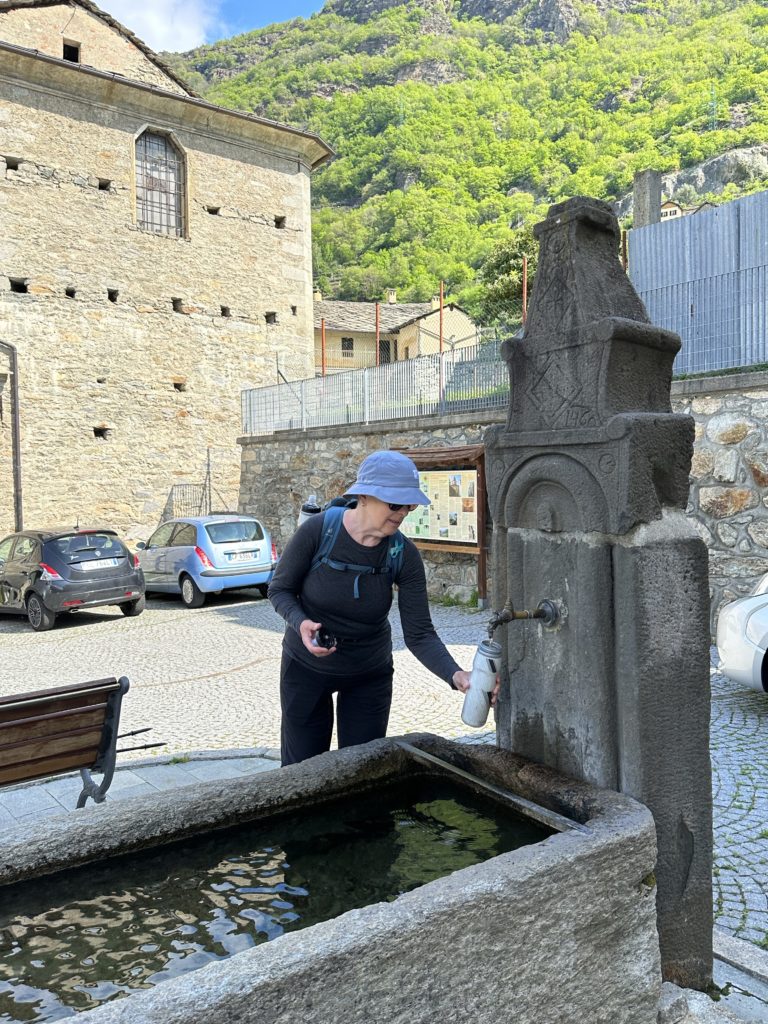




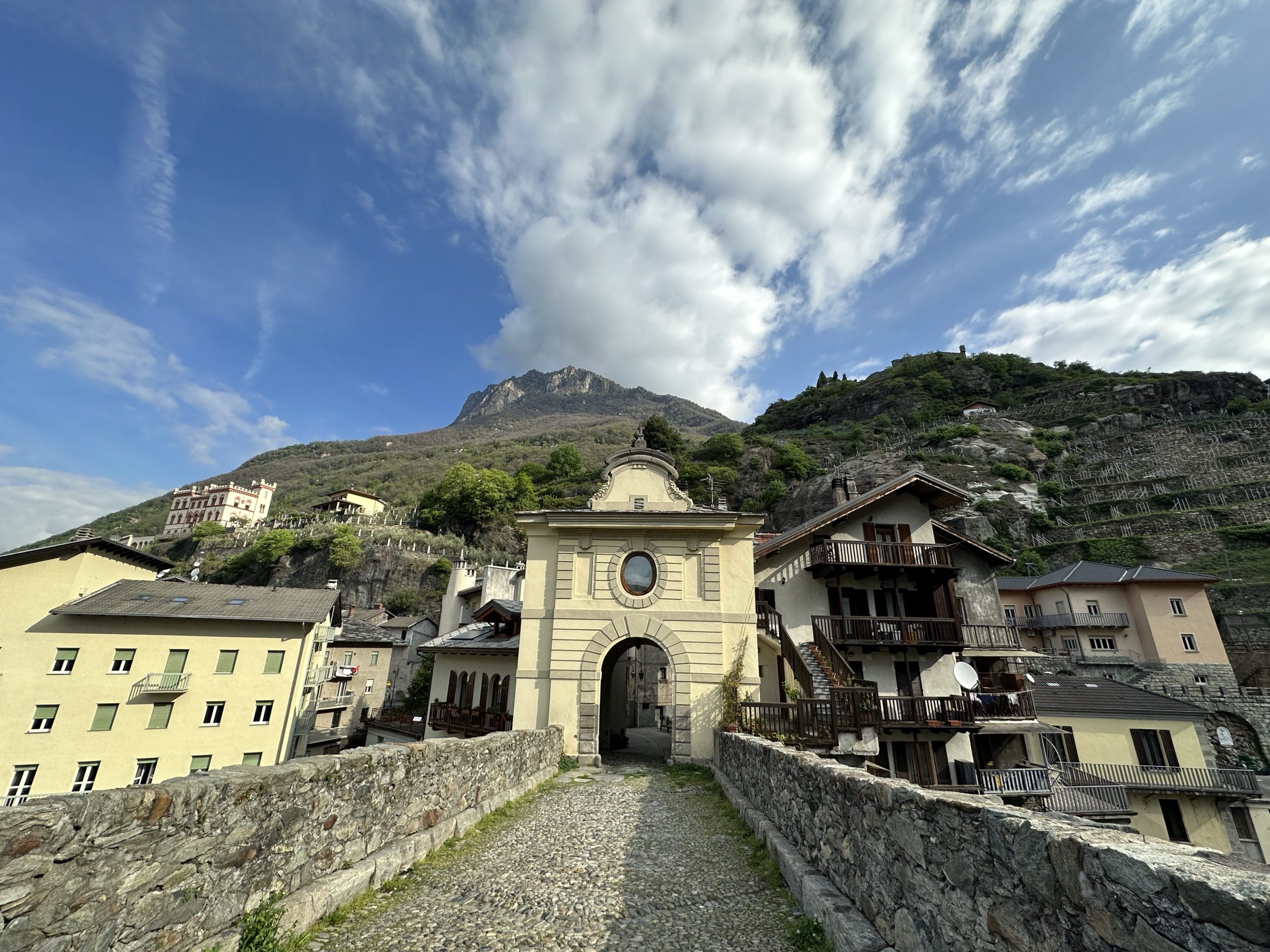
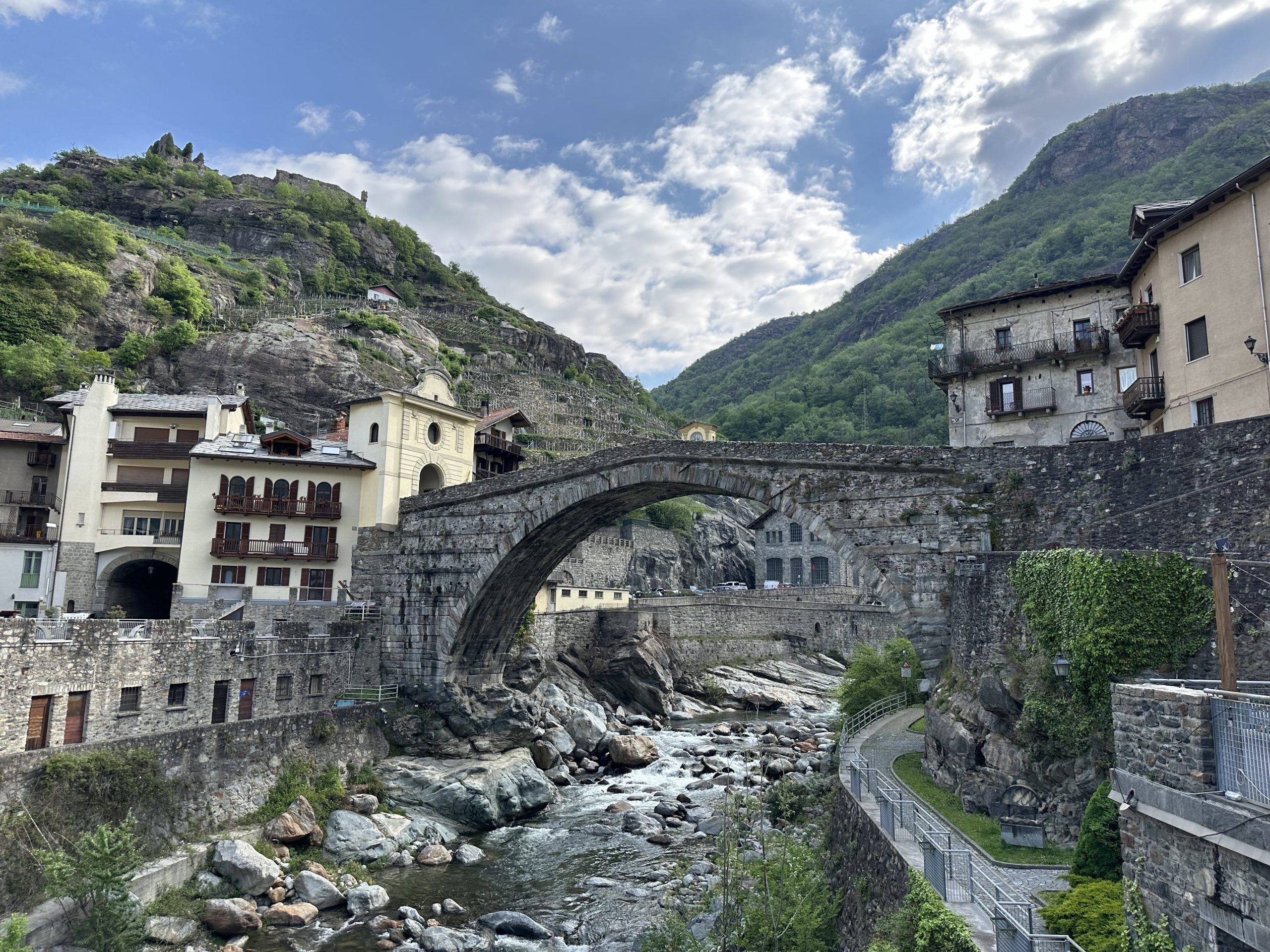
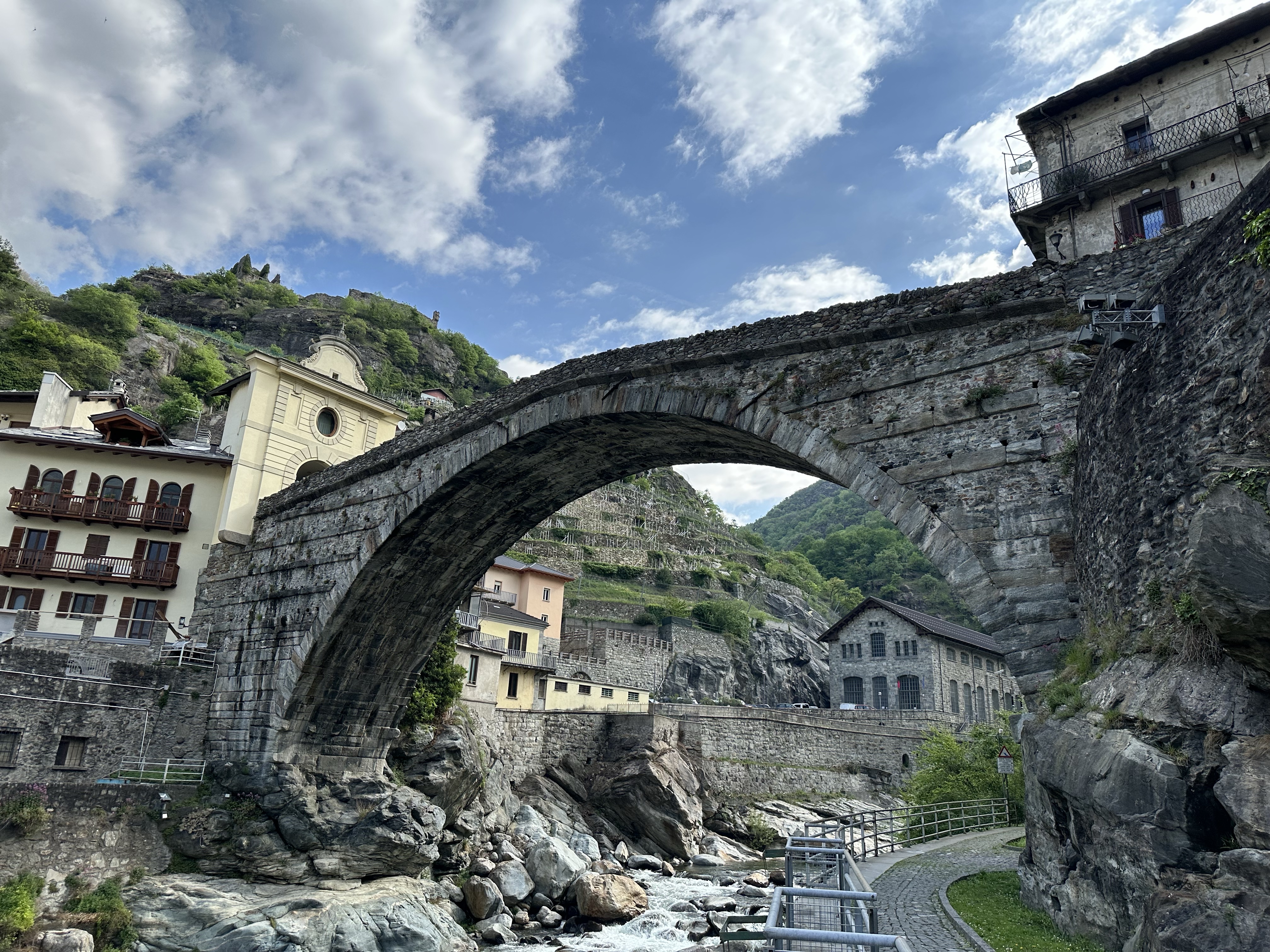

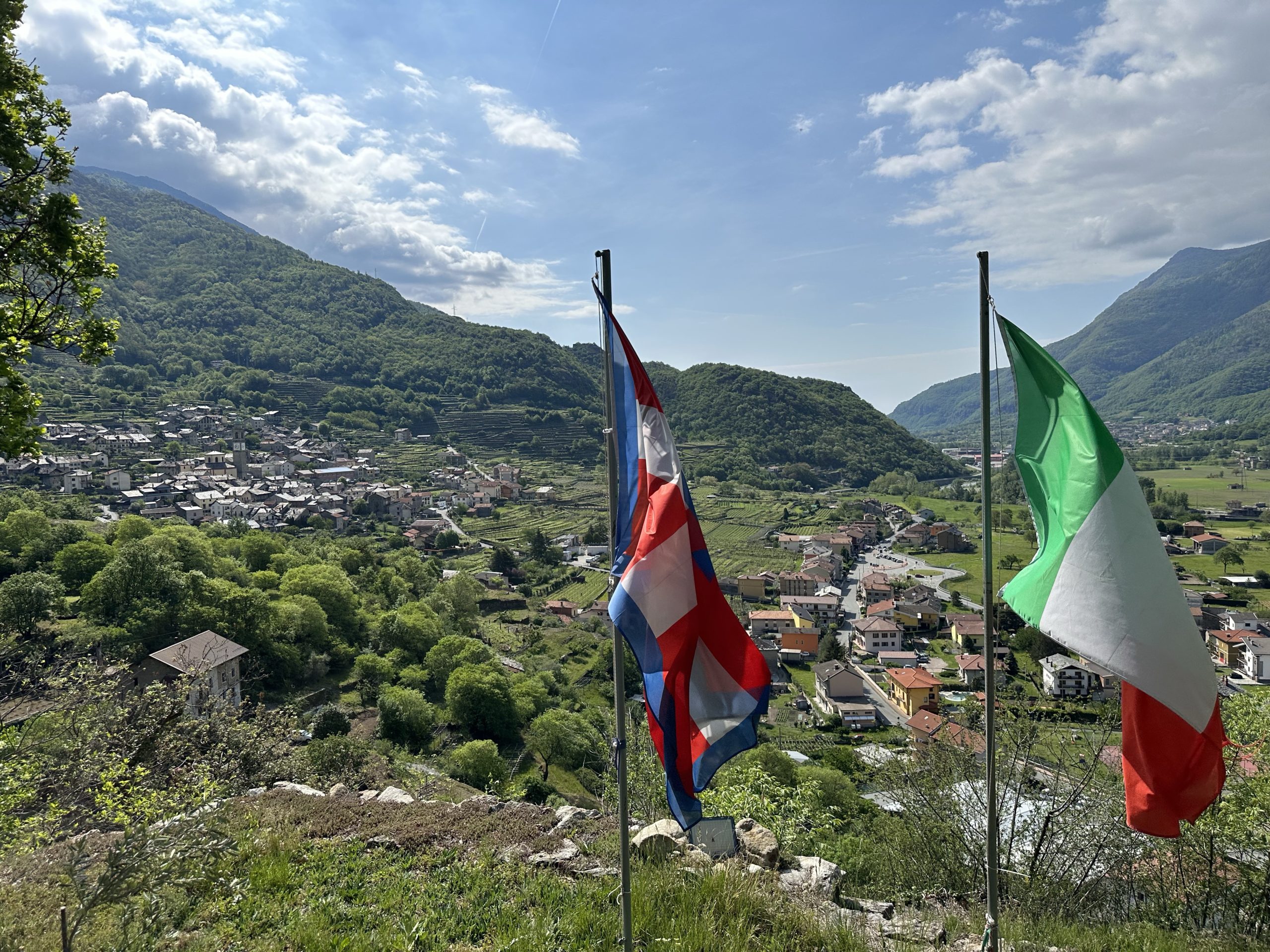


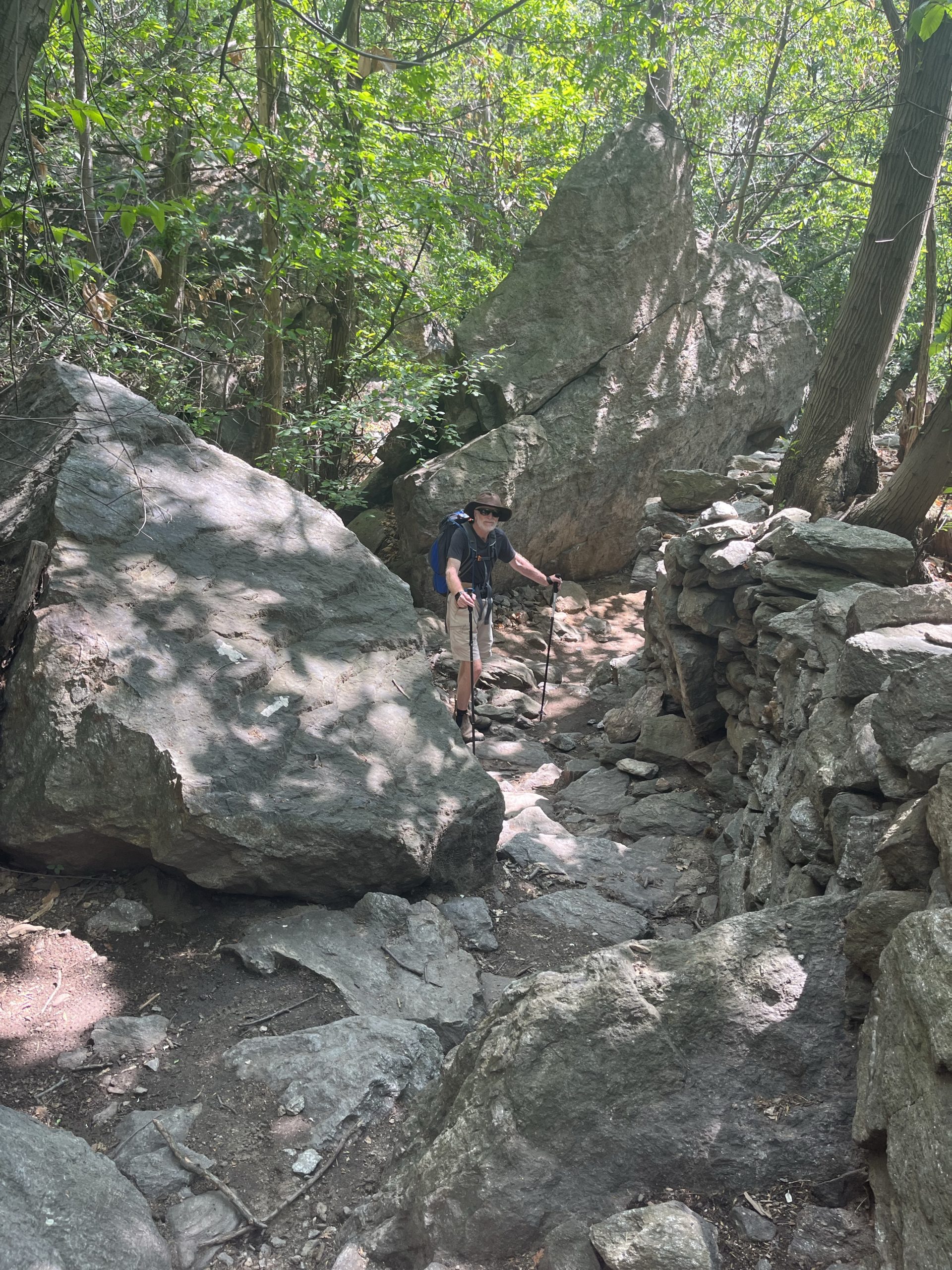


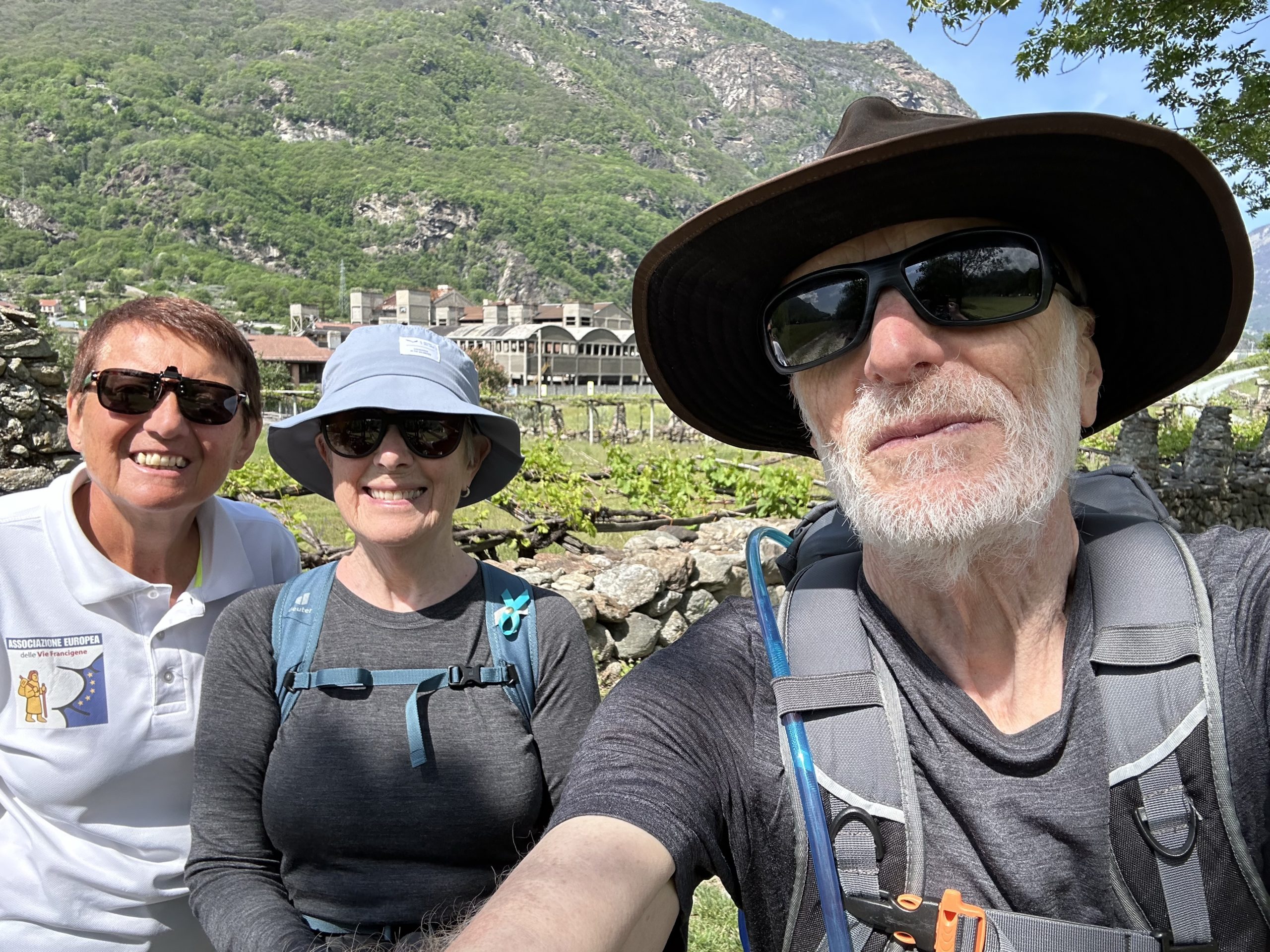


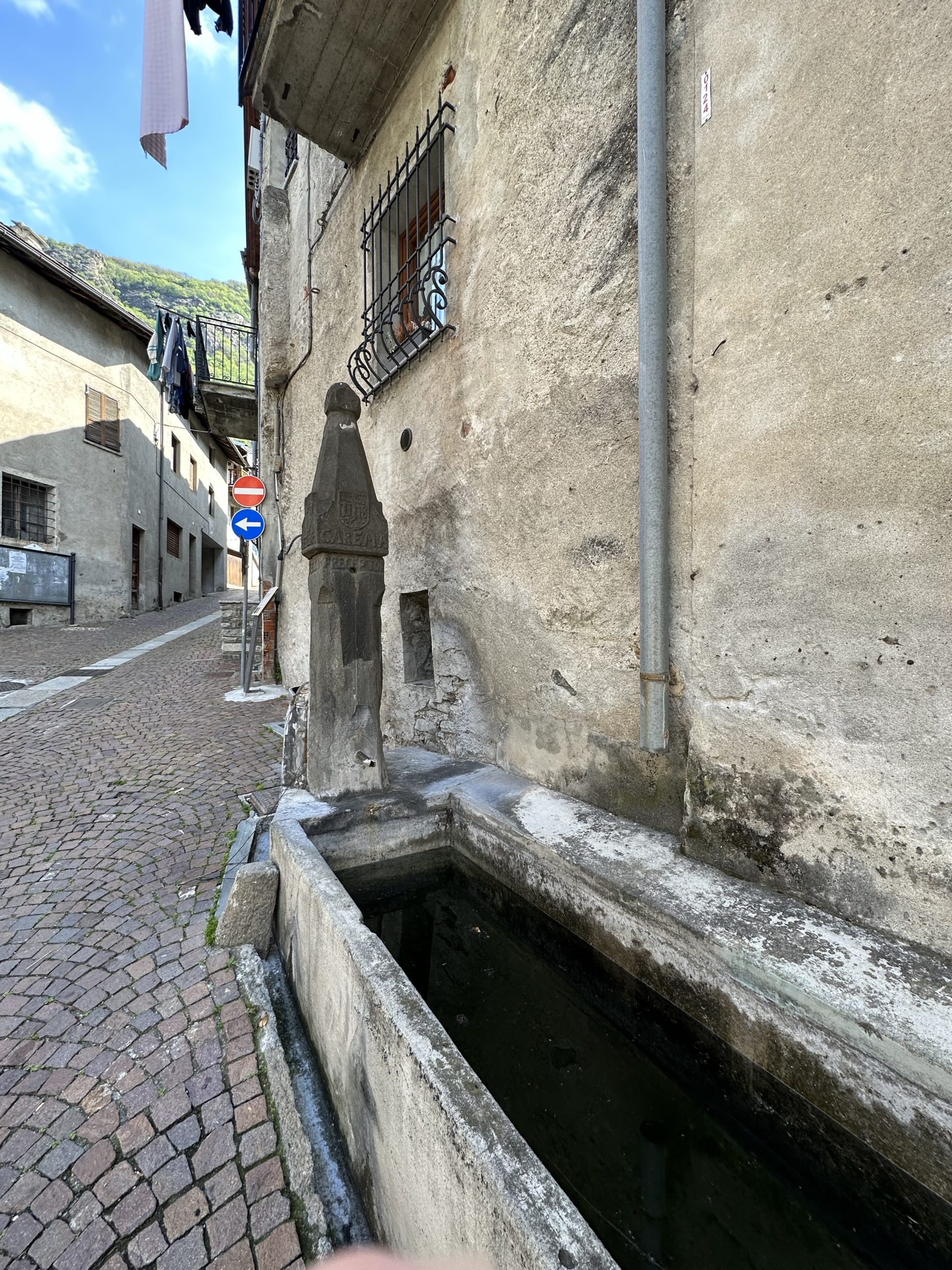




Stunning photos again from this region. You both look so happy on your trek despite the rocky steep inclines!! I love following your adventures!!
😊
Your words and your photos are simply MAGICAL!! I look forward to reading about your adventures every day!! I am in awe!!!
❤️❤️
Well done, you’re doing well and the weather looks good as well
Thanks, Liz. The weather is great, we sent our jackets back today! Hope all is well with you. xo
Beautiful photos! I’m glad you’re both doing well.
Thanks, Julie, We’re still getting into a rhythm, but doing well. Hope all well in TO. xo
What an amazing adventure you two are having.
Thanks Perry,
The Aosta Valley was stunning in many ways. We will be in the lowlands tomorrow soon!